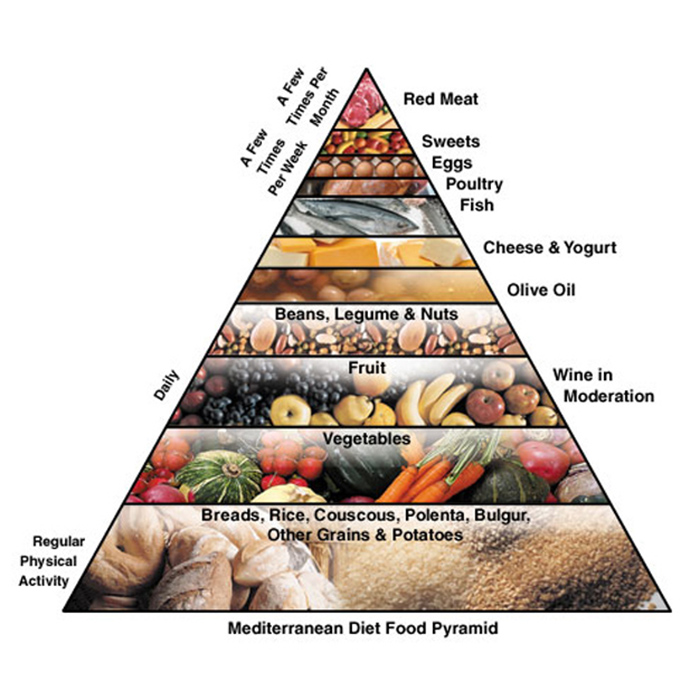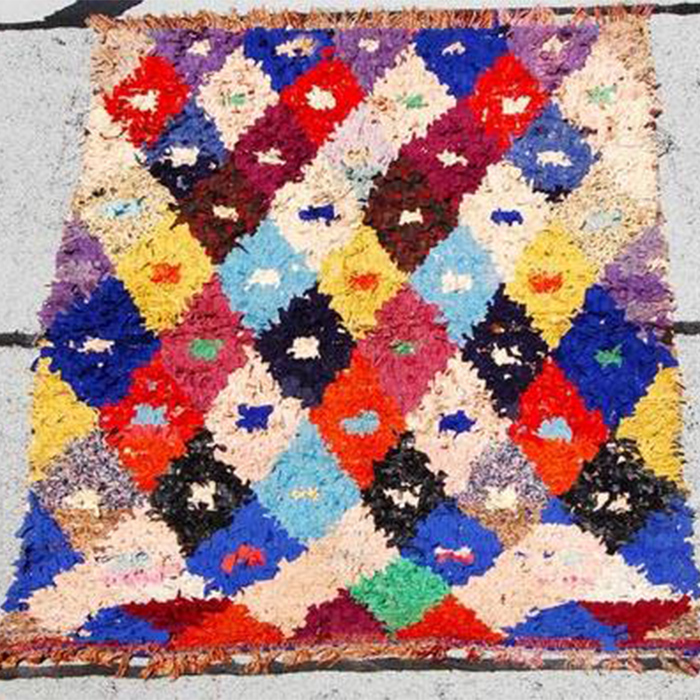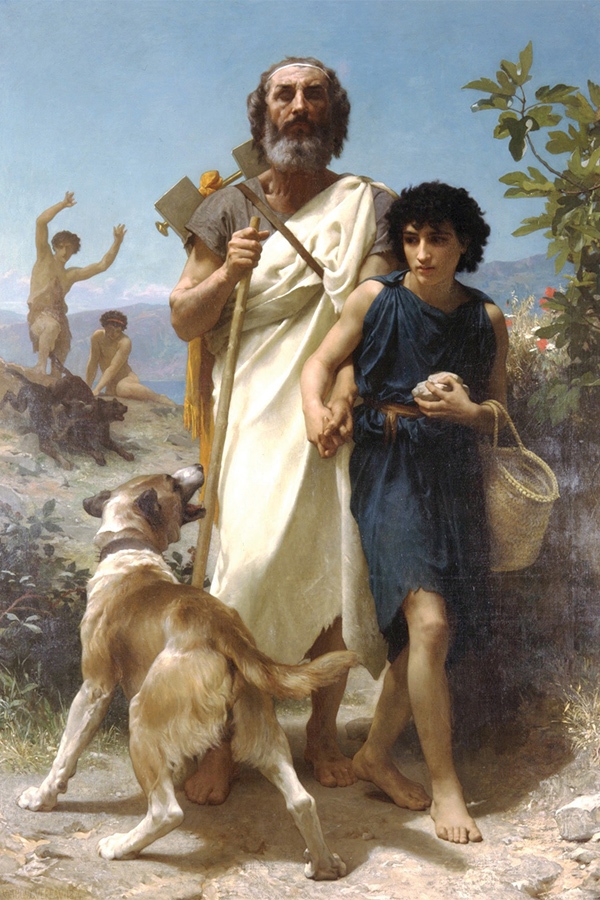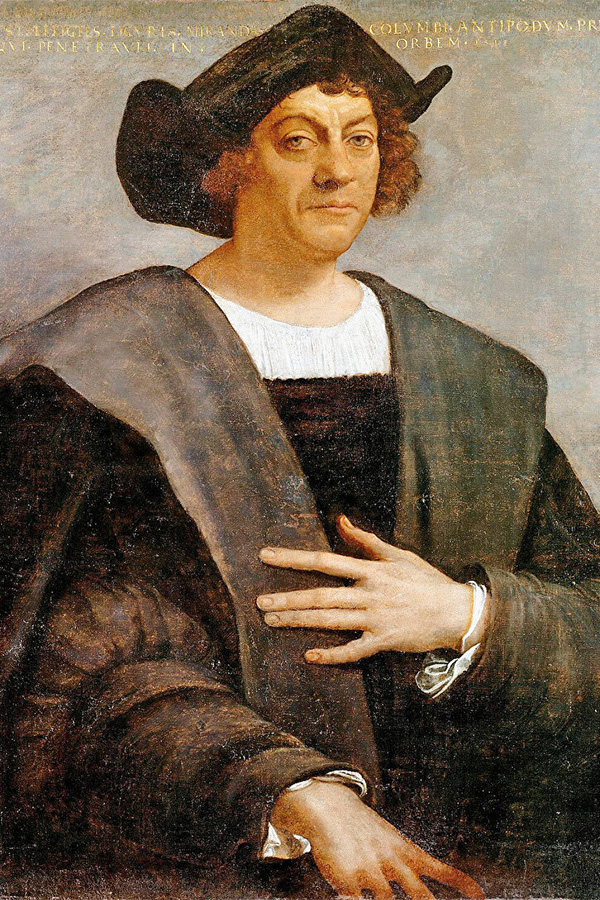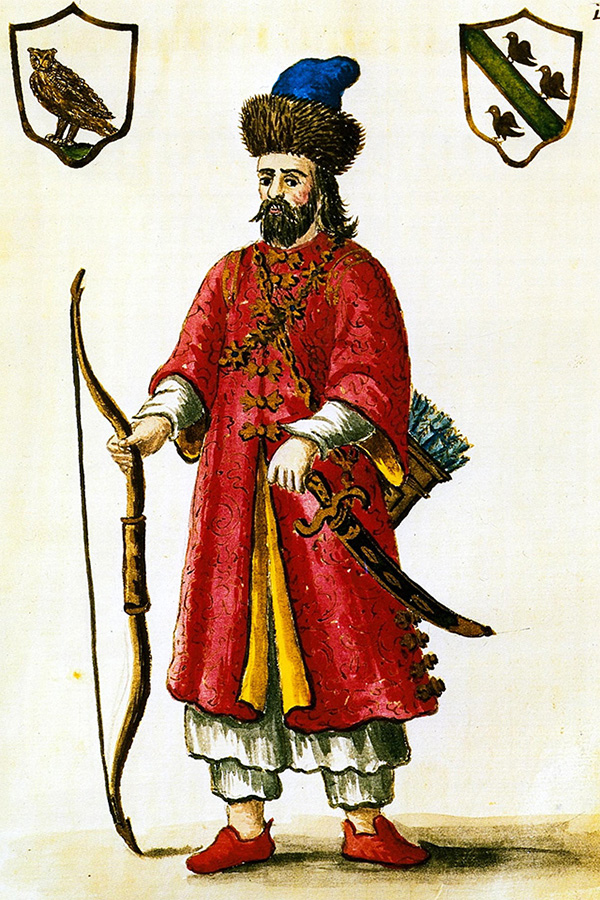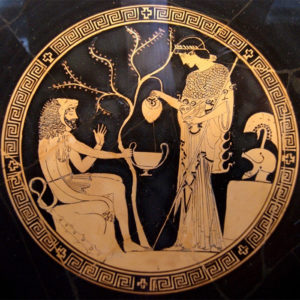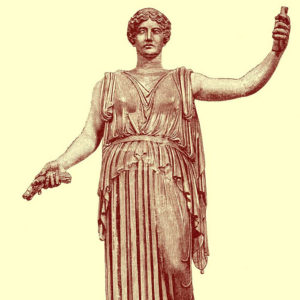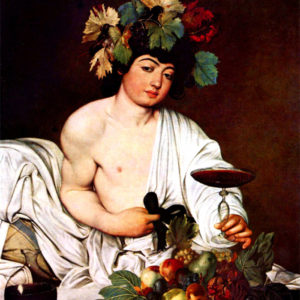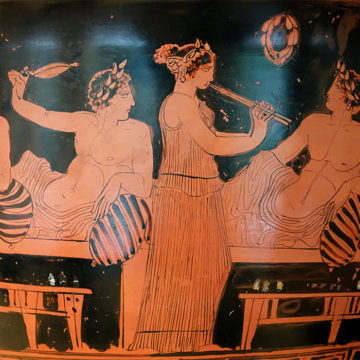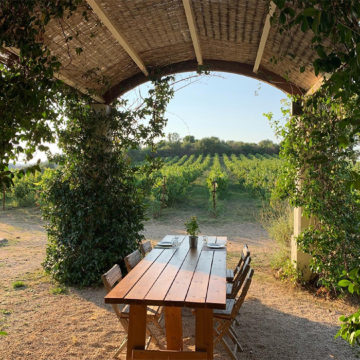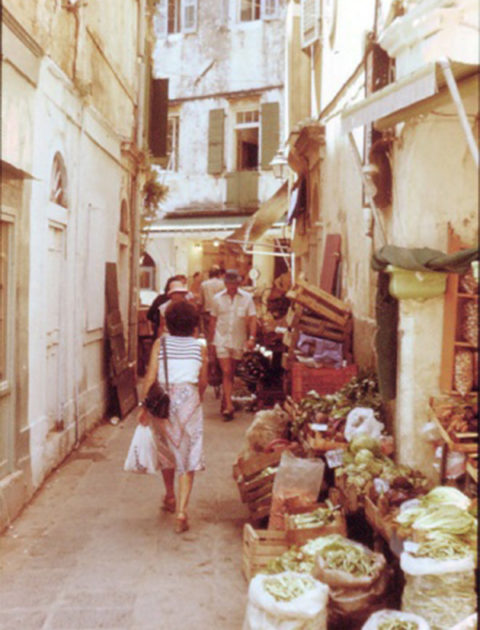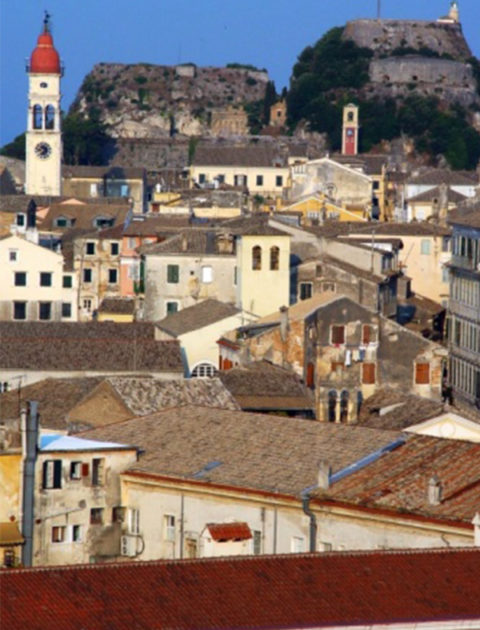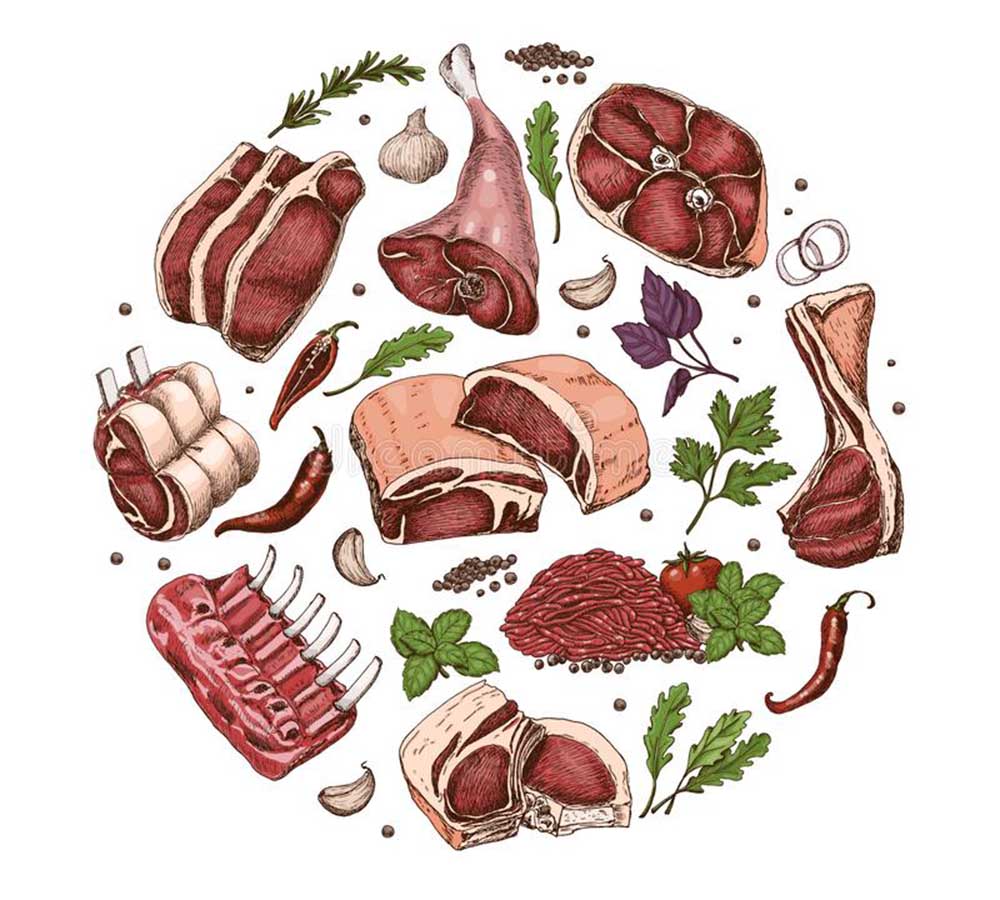
The Circle of Food
This is a story of circles. Circles within circles. Circles that gave birth to Gods and Heroes, Sages and Leaders, Arts and Sciences. Circles that once defined the whole of the known world, circles that claimed to be the middle –the very center- of Earth. Circles spiced with thyme and rosemary, sparkling sea salt and garlic, the great circles of Life.
The circle of the Sun or Homer’s Tavern
The first is the biggest, the Great stone cooking pot, the cauldron of blue and salty Mediterranean Sea. A cooking pot constantly simmering under the flames of the celestial circle of fire, the ever present Mediterranean sun. On every part of the rim of the cauldron mighty Gods were born, determining people fates. Strange Egyptian Gods, strict Jewish Gods, pagan forest Gods, Greek playful Gods, Roman Gods of Diversity and Christian Gods of Love. Great civilizations created, dreamed, fought each other thrived and perished.
This is a special part of the world, a part with an unmistaken strong identity. If you ask a geographer he will tell you that the Mediterranean zone coincides with the limits of the olive tree. But you do not have to follow the olive trees to trace the Mediterranean landscape. Visitors coming from northern regions feel the vivid sensation of opening a gate and entering into another world. And all this despite the contrasts: bays and inlets, peninsulas and islands, mountains, plains, deserts and green rolling hills. Because really this is the essence of the Mediterranean: unity but not uniformity.
This pluralistic unity characterizes every aspect of life in the Mediterranean, culture, religion, philosophy, art. All of them radiating with joy of life and a sunny, playful disposition. This even more evident in the Great tradition of Mediterranean cuisine, a cuisine that displays a multi-layered personality of its own, very sensual and strongly flavored. A cuisine that carries along with the spring gusts the scent of thyme, lavender, oregano and rosemary and a whole world of aromatic herbs, greens and spices. The Mediterranean table is laid with the products of a rural world, improvising but firmly rooted in the soil.
You will probably have encountered the famous pyramid of Mediterranean Diet. Well, forget all about it. It was an attempt to fit an extraordinary variety of lifestyles, cultures and kitchen techniques in the strict geometrical form of the pyramid. A much more appropriate picture of Mediterranean cuisine would be that of a patchwork, a patchwork that is eternally, weaved, stitched, ripped and embroidered, bringing various raw materials and techniques together, always different and always the same.
Mediterranean people have always regarded hospitality as one of the great, sacred values of life. Treating guests and visitors with respect and the outmost care was and still is very important. The same principle applies to many different ingredients not native to the Mediterranean agriculture and stock farming. They were seamlessly adopted and accepted, soon after their arrival from other territories in far-away continents, forming an integrated part of the patchwork.
Let us imagine the one and only archetypal Mediterranean restaurant. Let us meet its three proprietors, forming a thriving company: “Homer, Columbus and Marco Polo” S.A.
Each one of the proprietors contributed unique ingredients, raw materials, techniques and dining styles. Homer brought along wine, olives and olive oil, honey, bread, herbs, figs, pears, pomegranates but also lamb on the spit over charcoal. Columbus brought the guests from across the ocean, guests that were gladly accepted –after an initial hesitation though- and became part of the culinary tradition: tomatoes, potatoes, corn, beans, eggplants and peppers. 500 years after their introduction they have integrated perfectly with the locals. Finally the Great Venetian traveler opened his enormous oriental spice box, letting escape the aromas of black pepper, cinnamon, cassia, cumin, nutmeg, ginger and cloves. They have named their restaurant “The First Circle”.
The Circle of the Gods
It is time for us to leave the virtual Mediterranean restaurant and move on to the Second Circle, the circle within a circle, the circle of Greece. I could say many things about the Greek cuisine as it evolved through the millenniums, but I wish to focus to what I consider the main contributions of Greek civilization to the World Gastronomical heritage. Three food products and a ritual. The three food products –bread, olive oil and wine- may seem commonplace today, but constituted an enormous forward step in mankind’s history. They marked the transition from a primitive hunter-collector society to a civilized society, transforming and triumphing over nature, leaving a distinct human stamp on an instinct-driven procedure.
As you may have already spotted, all three products demand a special process, elaborate and delicate and the end product does not resemble at all to the plant part it originated from. And all three were made in Greece thousands of years ago. Evidence of the earliest wine production in Europe has been uncovered at archaeological sites in northern Greece (Macedonia), dated to 6,500 years ago. These same sites also contain remnants of the world’s earliest evidence of crushed grapes. Also, over 5,000 years ago oil was being extracted from olives in Greece. Remains of olive oil have been found in jugs over 4,000 years old in a tomb on the island of Naxos in the Aegean Sea. Olive trees were certainly cultivated by the Late Minoan period (1500 BC) in Crete, and perhaps as early as the Early Minoan. The cultivation of olive trees in Crete became particularly intense in the post-palatial period and played an important role in the island’s economy. The Minoans used olive oil in religious ceremonies. The oil became a principal product of the Minoan civilization, where it is thought to have represented wealth. The Minoans put the pulp into settling tanks and, when the oil had risen to the top, drained the water from the bottom. Bread was too a Greek contribution shared with other peoples of the region. The idea of a free-standing oven that could be pre-heated, with a door for access, appears to have been a Greek one. In ancient times the Greek bread was barley bread: Solon declared that wheaten bread might only be baked for feast days. By the 5th century bread could be purchased in Athens from a baker’s shop.
This alimentary Holy Trinity soon took the form of Holy Symbols and each one was under the protection of a God.
The daughter of Zeus, Athena gave to Greece the olive tree and to their capital city its name According to Herodotus, the city of Athens obtained its name because Athenians considered olive oil essential, preferring the offering of the goddess Athena (an olive tree) over the offering of Poseidon (a spring of salt water gushing out of a cliff).
Also in Greek mythology, Demeter is the goddess of the harvest, who presided over grains and the fertility of the earth. Her common surnames are Sito (σίτος: wheat) as the giver of grain and Thesmophoros (θεσμός, thesmos: divine order, unwritten law) as a mark of the civilized existence of agricultural society. No wonder that all grains in English (Cereal from Ceres the Roman equivalent grain goddess) and in Greek (Demetriaka) were named after her. Her own name comes from an early Indo-European version of Mother Earth.
Finally, Dionysus was the god of the grape harvest, winemaking and wine, of ritual madness and He is a god of epiphany, “the god that comes”, an arriving outsider-god. Thus Dionysus is represented by city religions as a god of the outsiders, the protector of those who do not belong to conventional society and thus symbolizes everything chaotic, dangerous and unexpected, everything which escapes human reason.
Greek people were later converted to the Christian religion but the sacred symbols remained the same. In Greek Orthodox Rituals the bread represents the body of Christ and the wine the blood. The olive oil is used to rub infants in the baptizing ritual and in the devotional lamps of saints’ icons.
All these are united in the second circle, the circle of the symposium (meaning in Greek “to drink together”), and a key Hellenic social institution. It was a forum for men, to drink, eat, to debate, philosophize and have a good time together. They were frequently held to celebrate the introduction of young men into the grown-ups society. Once again the simple physical need for feeding is elevated, through a social process to a human civilization achievement.
Thus we have reached the End of the second Circle, the Circle of the Gods.
The Circle of King Alkinoos’ Garden
“Outside the gate of the outer court there is a large garden of about four acres with a wall all round it. It is full of beautiful trees – pears, pomegranates, and the most delicious apples. There are luscious figs also, and olives in full growth. The fruits never rot nor fail all the year round, neither winter nor summer, for the air is so soft that a new crop ripens before the old has dropped. Pear grows on pear, apple on apple, and fig on fig, and so also with the grapes, for there is an excellent vineyard: on the level ground of a part of this, the grapes are being made into raisins; in another part they are being gathered; some are being trodden in the wine tubs, others further on have shed their blossom and are beginning to show fruit, others again are just changing color. In the furthest part of the ground there are beautifully arranged beds of flowers that are in bloom all the year round. Two streams go through it, the one turned in ducts throughout the whole garden, while the other is carried under the ground of the outer court to the house itself, and the town’s people draw water from it. Such, then, were the splendors with which the gods had endowed the house of king Alkinoos”.
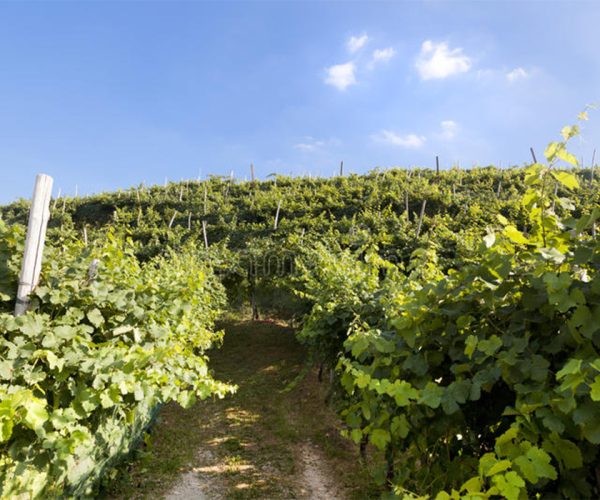
This how Homer, the blind poet describes through Ulysses’ eyes King Alkinoos garden and vineyard. Corfu has gone through many changes of fate since Homeric era, and was conquered by Sicilians, Byzantines, French, British and Russians. Nevertheless the longest and most influential –and in culinary tradition- conquest was the Venetian one. Four hundred and eleven years, eleven months and eleven days were quite enough for the Corfiots to learn how to use the “sacchetis Venetis” the small luxurious silk bags containing spices the merchant ships brought from the Orient, Beirut, Alexandria and Constantinople. Black pepper, ginger, saffron, cumin cinnamon, allspice and mace find their way in the kitchens of Corfiots, who also traditionally produce their one wine –each house has a year’s supply in a barrel- and all these are unified by the omnipresent local olive oil and the sharp tasting, black and small Corfu olives.
Many local products stand out: Numbulo Fumikado (smoked cured pork fillet with black pepper and wine), sykomaida (dried fig paste with mastic, ouzo, grated nuts, fennel, pepper, anise, carnations and cinnamon), mandoles (caramelized nuts), to mention just a few. Corfiots love parsley, red and black pepper, and garlic. Great local recipes have acquired fame all over Greece, the fragrant beef Pastitsada and the garlicky Sofrito. But above all the Corfiots love eating and drinking with friends, talking and teasing each other, in the mild Mediterranean weather, just like they do for the last 5.000 years in the middle of the three Eternal Circles.
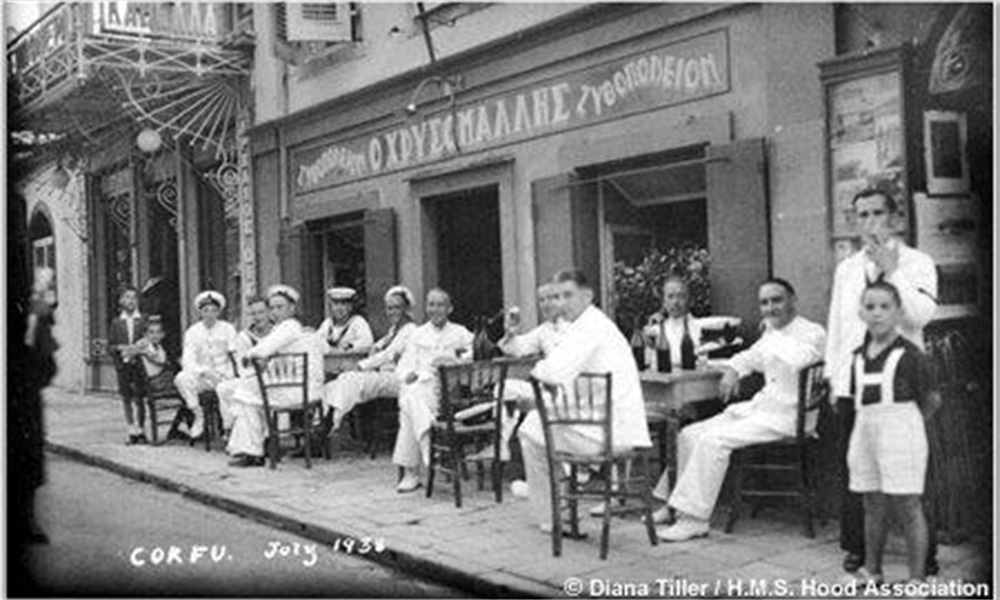
Related posts
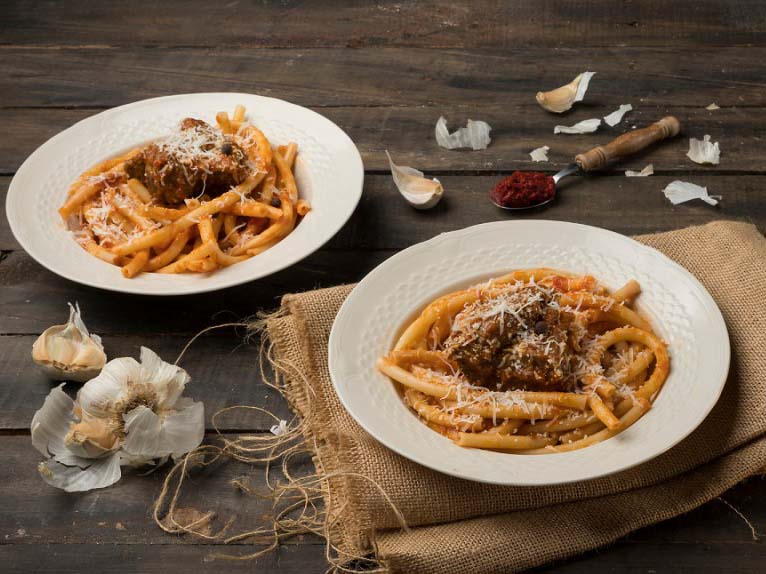 09Mar, 23
09Mar, 23 The Birth of Pastitsada
Two Germans fighting in a foreign territory (Italy), a battlefield strewn with gloriously fallen horses and plenty of barrels of wine, herbs and spices. All this marked the birth of Pastitsada, in Verona, the city that also gave birth to Romeo and Juliet …
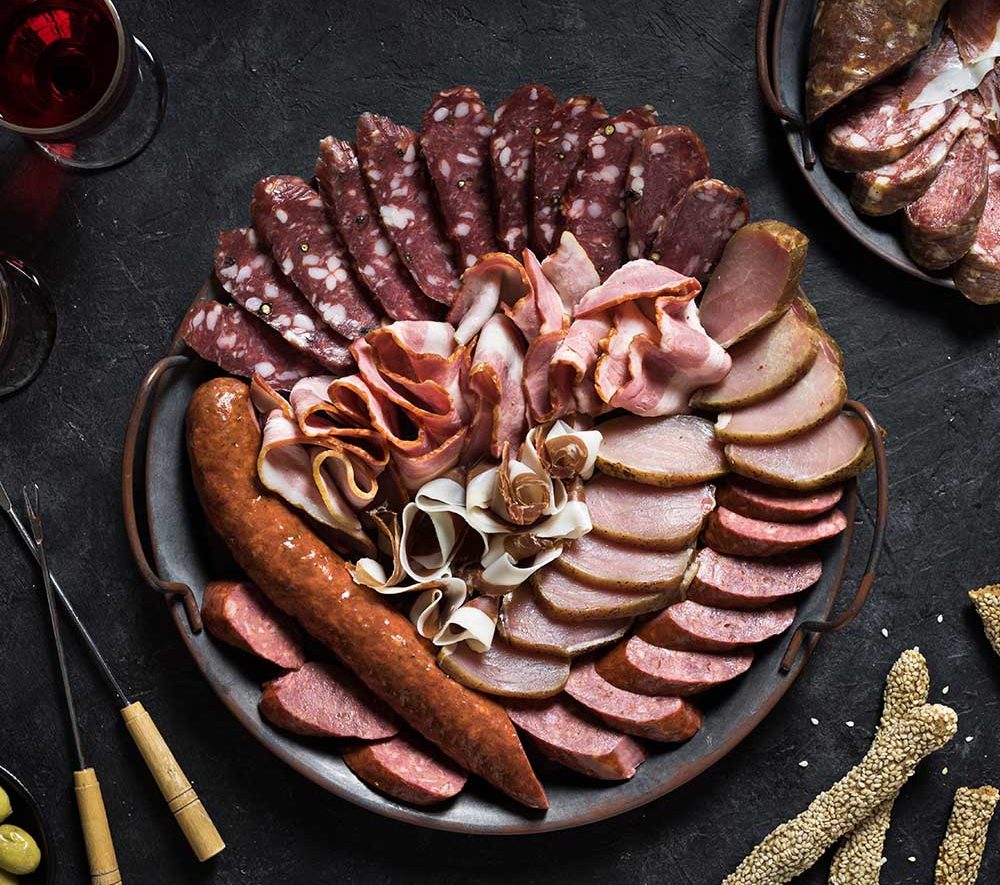 02Mar, 23
02Mar, 23 Noumboulo Fumicado: Venetian Elegance, Corfiot Fragrance
When on January 9, 1387, under a golden bull, the Serenissima Republic of Venice gave its approval to the request of the five proxies of the Municipality of Corfu before the Doge Antonio Menier to annex Corfu …
